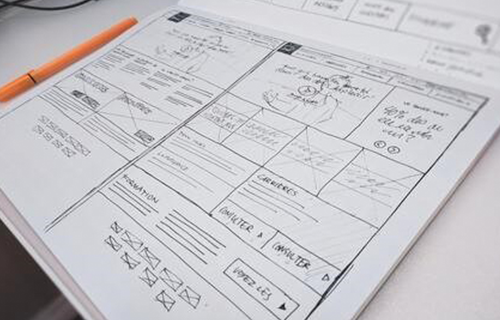Business activity monitoring, which consists of tracking and analysing the number of hours worked by employees as well as the content of that work, is a key issue linked to productivity monitoring and cost price setting. But how can we monitor this activity today? What modern tools are available to companies? Let's take a look.
Job costing management: what is it?
In companies, job costing management consists of recording the actual working hours of employees in a spreadsheet, as well as details of the tasks carried out during these working hours.
In other words, job costing management is the act of recording all the activities undertaken by employees in order to keep track of their activities.
You can choose to set up various indicators to give you an overall view of your organisation.
These indicators may include: the number of hours worked, tasks completed, the client names for whom a project has been delivered, etc.
This job costing management can be carried out for individuals or teams, or both.
It should be noted that individual monitoring will enable you to discuss areas for improvement with your employee in a factual and objective way during your annual appraisal interviews. It is therefore a key HR tool.
Once the objective has been defined, the next step is to set up this monitoring system within the company.
It will be necessary to overcome the reluctance of some employees who see this job costing management as a means of controlling them under the guise of improving the company's performance.
Setting up job costing management: how do you go about it?
It is important to bear in mind that to be effective, understood and accepted by everyone, the job costing management system put in place must be :
- Complete, in order to gather as much information as possible for continuous improvement.
- Regularly updated, to reflect reality as closely as possible.
In most companies, the monitoring of these professional activity hours is done using "in-house" forms or Excel spreadsheets, which are then validated by the line manager before being used.
This enables data to be collected that can be broken down and qualified as follows:
- Human data: time spent on the project, overall working time, rest days taken, etc.
- Quantitative data: quantities produced, man-days per activity.
- Financial data: cost per employee, per activity.
Analysis of this data will enable the company to highlight areas for improvement, as well as invoicing clients or drawing up salary slips for its employees (any overtime will appear).
Nowadays, it is also possible to automate job costing management using "time and attendance management" software, otherwise known as T&A.
It should be noted that many companies developing HRIS software offer T&A solutions that complement existing HRIS software, in the form of modules or options.
Below are details of the tools and solutions on offer:
- Customised set-up to match the company's requirements.
- Detailed timesheets (time windows or day accounts by task, project or client).
- Validation notifications for managers.
- Dashboards and visualisation of time and budget data with filters (employees, projects, clients).
- Creation of customised reports.
- Data export.

Job costing management: the goal and expected effects
One of the main challenges is of course to improve team performance.
It's also an excellent way of managing projects, monitoring them and ensuring their progress.
The use of software dedicated to monitoring activities offers many advantages in terms of management, human resources management, accounting and finance.
Such software enables you to :
Reduce the administrative burden
Employees enter their hours themselves into a simple, easy-to-use application created just for them. They can easily find out how much overtime they have accumulated and the balance of hours to be taken off in lieu, so they no longer have to contact the HR department every month with their requests.
What's more, this information can be consulted directly by managers to validate timesheets. This information can also be exported to the accounting and human resources departments for invoicing clients and compiling payslips. No more oversights or double entries!
It is also conceivable that these applications could be installed on computers, tablets or smartphones, providing employees with greater access to information in real time.
Control costs and time
Each manager can display in real time the tasks carried out and the money spent allocated to each activity. This can be used to identify problems, control and fine-tune project management by redistributing resources.
Monitor performance
Data analysis is an essential tool for finance departments, which can calculate costs, margins and measure profitability. Armed with this information in real time, the company can set or adjust targets or prices.
Ensure the reliability of data and the transparency of collected information
The software is set up to comply with the regulations and agreements that apply to your company. You can, of course, tailor the software to your structure and ask for it to be perfectly adapted to your way of working.
Kelio, a complete HRIS software package, offers simple job costing and attendance management solutions tailored to your company.
I WOULD LIKE TO FIND OUT MORE ABOUT KELIO SOFTWARE AND JOB COSTING MANAGEMENT























